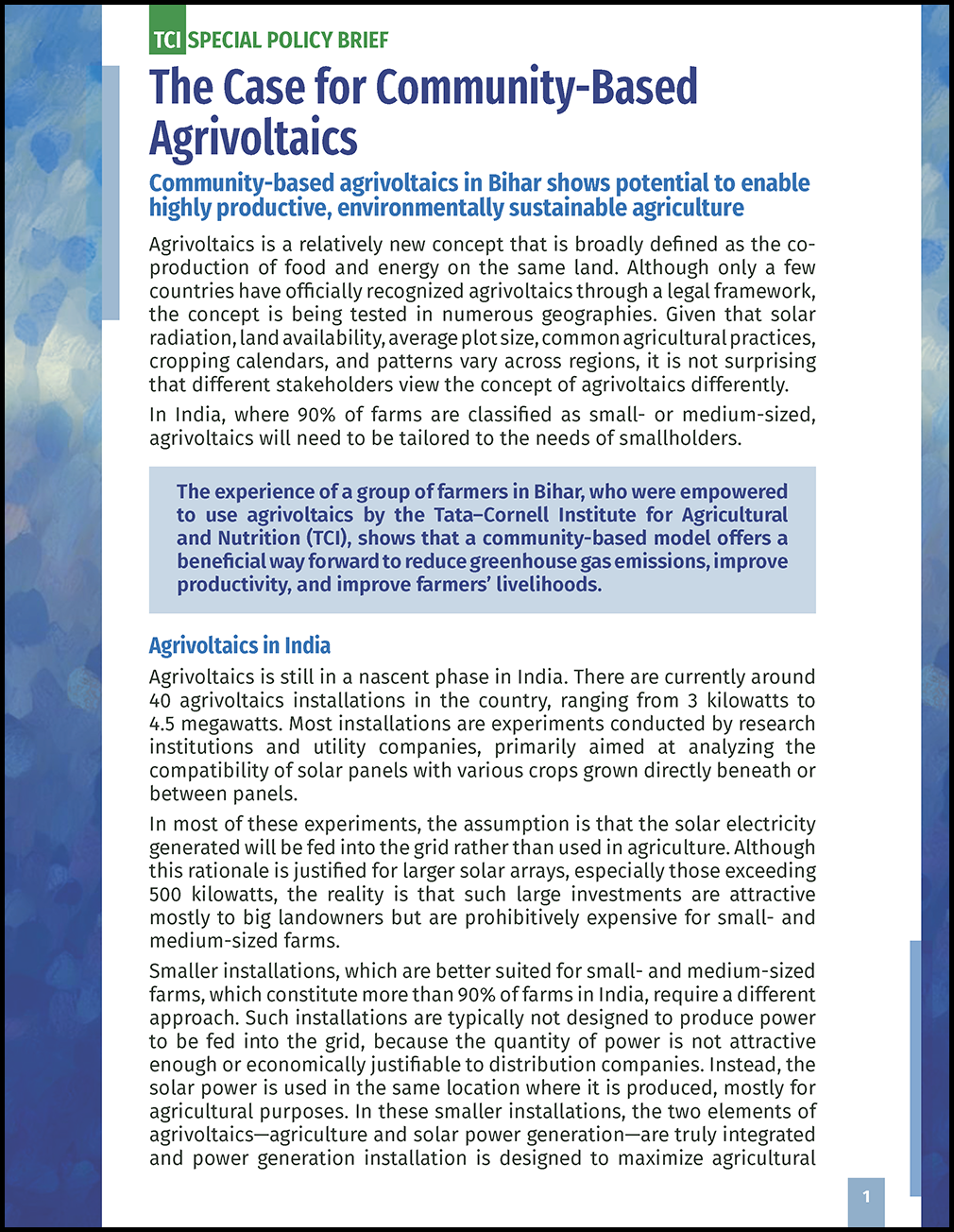Zero-Hunger, Zero-Carbon Food Systems

Across the developing world, policymakers and development practitioners concerned with eliminating hunger and improving nutrition are confronting a stark reality: as the world struggles to stop climate change, the nutritional demands of growing populations will increase the size of agriculture’s carbon footprint. TCI is meeting this challenge with an ambitious project aimed at reducing the greenhouse gas emissions associated with agriculture while improving productivity and benefiting farmer livelihoods.
Confronting two crises
India is the world’s third-largest emitter of greenhouse gases, behind only China and the United States. Under the Paris Climate Accord, it has pledged to reduce its emissions by 33–35 percent from 2005 levels. Complicating that task is the country’s simultaneous need to address widespread malnutrition among its growing population. Agriculture is responsible for nearly 20 percent of India’s emissions, with livestock and rice cultivation its biggest contributors. Between 1990 and 2014, agricultural emissions rose 25 percent.
This issue is not unique to India. Globally, agriculture and allied activities contribute to around 30 percent of overall greenhouse gas emissions. A FAO report indicates that between 638 and 720 million people faced hunger in 2024, a number that will grow as the population increases to an expected 9 billion people by 2050. To feed a population that size, global food production will have to increase 70 percent. Without a change in practices, agriculture’s environmental footprint will increase as well.
To overcome the crises of climate change and food insecurity, emissions will have to be reduced while agricultural productivity increases. This presents an enormous challenge, but by adopting a holistic approach to the two sides of the task, it is not insurmountable. Through the Zero-Hunger, Zero-Carbon Food Systems Project, TCI hopes to show that the ability of the agricultural sector to achieve “net-zero carbon” en route to zero hunger is both desirable and achievable.
Creating a roadmap for reduced emissions and high productivity
In the first stage of the project, TCI researchers assessed the challenges facing different agricultural production systems in the state of Bihar, identified possible mitigation measures for each system and modeled their impact on emissions if successfully implemented. As a result, TCI produced a set of policy options for reducing agricultural greenhouse gas emissions and boosting productivity.
Generating evidence and scaling up
In the second stage of the project, researchers are working to assess the viability of several climate-smart interventions and generate evidence to support scaling up those interventions through existing agriculture and livelihood programs.
Researchers are focused on three interventions:
- Agrivoltaics: TCI researchers are piloting a multi-use, community-based model of agrivoltaics—the co-location of solar power generation and agricultural production on the same land. In contrast with conventional agrivoltaics, which is primarily focused on power generation, community-based agrivoltaics is geared toward increasing agricultural production, promoting crop diversity, and improving farmer livelihoods by using solar power for micro-irrigation and other useful applications, such as flour mills.
- Advanced artificial insemination and methane-reducing feed supplements: Advanced artificial insemination using sex-sorted semen can improve livestock productivity by increasing the ratio of female-to-male cattle within herds, while anti-methanogenic feed supplements can reduce the emissions associated with livestock. TCI researchers are assessing the effectiveness of different policy levers for increasing the adoption of these technologies, such as subsidy levels and raising awareness of their benefits.
- Integrated management practices for rice production: Rice production, which in Bihar is often dependent upon high fertilizer usage and field flooding for irrigation, is a major source of agricultural greenhouse gas emissions. TCI-supported research aims to demonstrate the effectiveness of advanced crop management practices like precision fertilizer recommendations and alternate wetting and drying for achieving optimal water and nutrient usage in Bihar’s rice production systems, thereby increasing productivity and reducing nitrogen and methane emissions.
These activities have the potential to reduce net agricultural emissions while improving productivity and farmers’ livelihoods in Bihar, providing a replicable model for other Indian states.
 Read a policy brief on
Read a policy brief on
community agrivoltaics
Featured image: A demonstration of agrivoltaics—the use of the same agricultural land for both growing crops and generating solar power. (Photo by Milorad Plavsic/TCI)







